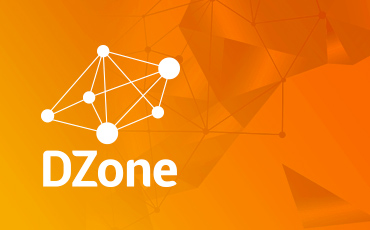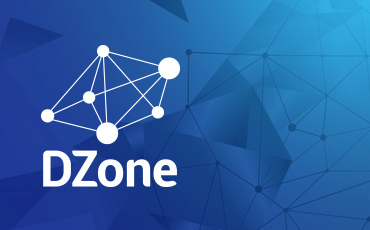Stats
| Reputation: | 15236 |
| Pageviews: | 11.9M |
| Articles: | 42 |
| Comments: | 63 |




E-Commerce Development Essentials
Swift Essentials
Getting Started With Memcached
WebMatrix
HTML5: The Evolution of Web Standards
Getting Started with UML
Getting Started with Apache Ant
Getting Started with Java GUI Development
Eclipse Plug-in Development
Getting Started with Eclipse RCP
Essential EMF
Containers
With a mainstream shift toward cloud-native development, more organizations than ever are realizing real benefits as they modernize their architectures with containerized environments. While this move promises to accelerate application development, it also introduces a new set of challenges that occur with a fundamentally altered software delivery pipeline, ranging from security to complexity and scaling.In DZone's 2021 Containers Trend Report, we explore the current state of container adoption, uncover common pain points of adopting containers in a legacy environment, and explore modern solutions for building scalable, secure, stable, and performant containerized applications.
Comments
Jan 19, 2017 · James Sugrue
Well the aim of the unit test should be to check that the facade returns what you expect to have returned, maybe checking that an object returned is a combination of values from a number of services. Code coverage really should be at the facade itself, but in turn that will give you coverage of the services that are behind that facade.
James
Jan 03, 2017 · James Sugrue
The ShoppingCart is the main entry point for using this pattern
James
May 12, 2016 · Dave Fecak
Thanks for taking the time out to summarise the podcast Dave. It's always enlightening to hear what James Gosling has to say about where Java is headed.
Clear enough that he isn't a fan of Swift!
Mar 30, 2016 · Sam Atkinson
Jun 24, 2011 · James Sugrue
Jun 23, 2011 · James Sugrue
Jun 23, 2011 · James Sugrue
May 12, 2010 · James Sugrue
Thanks Florian
No reason at all - it would have been better to use List :)
James
May 12, 2010 · James Sugrue
Thanks Florian
No reason at all - it would have been better to use List :)
James
May 12, 2010 · James Sugrue
Thanks Florian
No reason at all - it would have been better to use List :)
James
May 12, 2010 · James Sugrue
Thanks Florian
No reason at all - it would have been better to use List :)
James
May 11, 2010 · James Sugrue
May 11, 2010 · James Sugrue
May 11, 2010 · James Sugrue
May 11, 2010 · James Sugrue
Apr 26, 2010 · James Sugrue
Thanks Gabor
Yes - that foreach syntax has been in since Java 5.
James
Apr 26, 2010 · James Sugrue
Thanks Gabor
Yes - that foreach syntax has been in since Java 5.
James
Apr 26, 2010 · James Sugrue
Thanks Gabor
Yes - that foreach syntax has been in since Java 5.
James
Apr 08, 2010 · James Sugrue
Apr 08, 2010 · James Sugrue
Apr 06, 2010 · James Sugrue
Apr 06, 2010 · James Sugrue
Apr 06, 2010 · James Sugrue
Apr 06, 2010 · James Sugrue
Mar 30, 2010 · James Sugrue
Thanks for the example Mark.
The reason I didn't do the abstract base class was because of single inheritance, but it does make a bit more sense to do it this way.
James
Mar 30, 2010 · James Sugrue
Thanks for the example Mark.
The reason I didn't do the abstract base class was because of single inheritance, but it does make a bit more sense to do it this way.
James
Mar 30, 2010 · James Sugrue
Thanks for the example Mark.
The reason I didn't do the abstract base class was because of single inheritance, but it does make a bit more sense to do it this way.
James
Mar 12, 2010 · James Sugrue
Mar 09, 2010 · James Sugrue
Thanks Erin - I've updated the visitor to include those methods.
You're right, it does make things clearer.
Mar 09, 2010 · James Sugrue
Thanks Erin - I've updated the visitor to include those methods.
You're right, it does make things clearer.
Mar 09, 2010 · James Sugrue
Thanks Erin - I've updated the visitor to include those methods.
You're right, it does make things clearer.
Mar 09, 2010 · James Sugrue
Mar 09, 2010 · James Sugrue
Mar 09, 2010 · James Sugrue
Mar 09, 2010 · James Sugrue
Mar 09, 2010 · James Sugrue
Mar 09, 2010 · James Sugrue
Good to see some discussion around the pattern. I think that in the case of the example above, what you say is true. But if we wanted to decide inside our Item class whether or not it should participate in any visiting, we would have extra logic around the accept(Visitor vistor) method.
For example, if we have books that are free and we never want any visitor to drop by.
But I do agree, with Visitor you have a level of coupling that you might not have wanted. Again, before you use the pattern, you need to be sure it fits.
Mar 09, 2010 · James Sugrue
Good to see some discussion around the pattern. I think that in the case of the example above, what you say is true. But if we wanted to decide inside our Item class whether or not it should participate in any visiting, we would have extra logic around the accept(Visitor vistor) method.
For example, if we have books that are free and we never want any visitor to drop by.
But I do agree, with Visitor you have a level of coupling that you might not have wanted. Again, before you use the pattern, you need to be sure it fits.
Mar 03, 2010 · James Sugrue
The thing with a lot of patterns is that they're not new approaches to problems, but rather proven solutions to particular scenarios. So, like Observer, Strategy is one of those patterns that you may have been using all along.
The big advantage with a pattern, is that you can say "I'll use Strategy" to explain your design, rather than explaining the whole approach. It's a nice shorthand for designers and developers.
So to answer your question, there's nothing particularly unique about it, but that doesn't stop it from becoming a pattern.
Mar 03, 2010 · James Sugrue
The thing with a lot of patterns is that they're not new approaches to problems, but rather proven solutions to particular scenarios. So, like Observer, Strategy is one of those patterns that you may have been using all along.
The big advantage with a pattern, is that you can say "I'll use Strategy" to explain your design, rather than explaining the whole approach. It's a nice shorthand for designers and developers.
So to answer your question, there's nothing particularly unique about it, but that doesn't stop it from becoming a pattern.
Mar 03, 2010 · James Sugrue
The thing with a lot of patterns is that they're not new approaches to problems, but rather proven solutions to particular scenarios. So, like Observer, Strategy is one of those patterns that you may have been using all along.
The big advantage with a pattern, is that you can say "I'll use Strategy" to explain your design, rather than explaining the whole approach. It's a nice shorthand for designers and developers.
So to answer your question, there's nothing particularly unique about it, but that doesn't stop it from becoming a pattern.
Feb 23, 2010 · James Sugrue
Thanks for spotting that - should be fixed now
Feb 23, 2010 · James Sugrue
Thanks for spotting that - should be fixed now
Feb 23, 2010 · James Sugrue
Thanks for spotting that - should be fixed now
Feb 23, 2010 · James Sugrue
Thanks for spotting that - should be fixed now
Feb 19, 2010 · James Sugrue
Feb 19, 2010 · James Sugrue
Feb 15, 2010 · James Sugrue
Thanks for the comments. I'll make sure to add in the differences in the future patterns, and will edit the existing articles in the series soon to illustrate the differences.
Feb 15, 2010 · James Sugrue
Thanks for the comments. I'll make sure to add in the differences in the future patterns, and will edit the existing articles in the series soon to illustrate the differences.
Feb 15, 2010 · James Sugrue
Thanks for the comments. I'll make sure to add in the differences in the future patterns, and will edit the existing articles in the series soon to illustrate the differences.
Feb 09, 2010 · James Sugrue
Thanks Eyal
Another description for Adapter would be wrapper. As such, I think that MouseAdapter could be considered to follow the Adapter pattern.
James
Feb 09, 2010 · James Sugrue
Thanks Eyal
Another description for Adapter would be wrapper. As such, I think that MouseAdapter could be considered to follow the Adapter pattern.
James
Feb 04, 2010 · James Sugrue
Thanks for the link - that is a really good list of downsides to the pattern. I've added these on to the end of the article, and will keep the downsides in mind for future articles in the series.
Feb 04, 2010 · James Sugrue
Thanks for the link - that is a really good list of downsides to the pattern. I've added these on to the end of the article, and will keep the downsides in mind for future articles in the series.
Feb 04, 2010 · James Sugrue
Thanks for the link - that is a really good list of downsides to the pattern. I've added these on to the end of the article, and will keep the downsides in mind for future articles in the series.
Feb 04, 2010 · James Sugrue
Feb 04, 2010 · James Sugrue
May 28, 2009 · James Sugrue
That's strange. According the the 1.1.1 release notes, 64bit Vista is supported : https://visualvm.dev.java.net/relnotes.html
I wonder if you'll have more success with the downloadable version? Let us know
James
May 28, 2009 · James Sugrue
That's strange. According the the 1.1.1 release notes, 64bit Vista is supported : https://visualvm.dev.java.net/relnotes.html
I wonder if you'll have more success with the downloadable version? Let us know
James
Dec 16, 2008 · Geertjan Wielenga
That is pretty cool - the lightweight/heavyweight thing has caused problems for me in the past. Great to see the effort still being put into Swing bug fixes
May 08, 2008 · James Sugrue
I'm not sure about the answer there Jacek - but I would also be quite disappointed if it's limited to JavaFX - that would be like Sun turning their back on the core Java desktop developers.
Does anyone have any information on this?
May 08, 2008 · James Sugrue
I'm not sure about the answer there Jacek - but I would also be quite disappointed if it's limited to JavaFX - that would be like Sun turning their back on the core Java desktop developers.
Does anyone have any information on this?
May 08, 2008 · James Sugrue
I'm not sure about the answer there Jacek - but I would also be quite disappointed if it's limited to JavaFX - that would be like Sun turning their back on the core Java desktop developers.
Does anyone have any information on this?